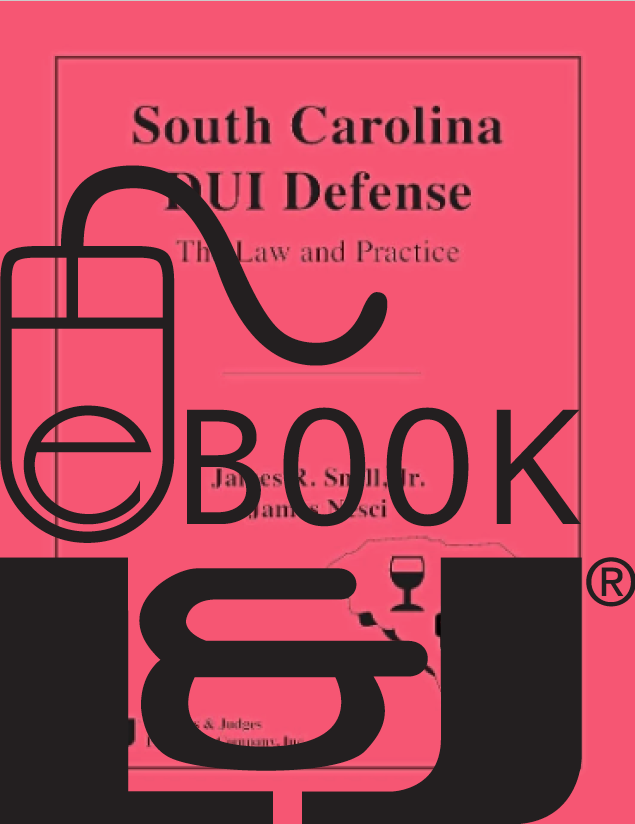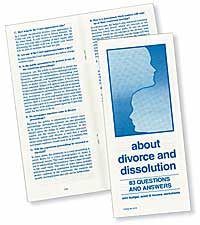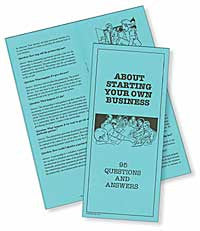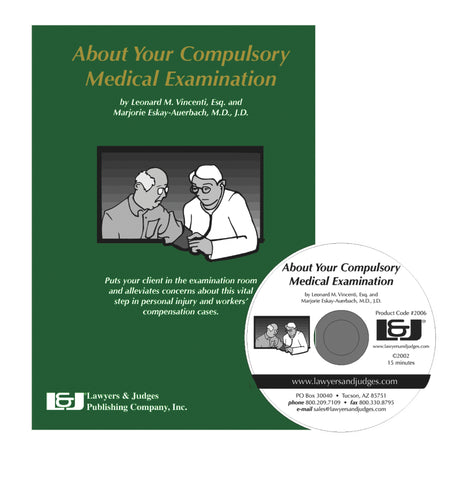
South Carolina DUI Defense: The Law and Practice PDF eBook
-
Author: James R. Snell Jr. and James Nesci
-
ISBN 10: 1-936360-53-5
- ISBN 13: 978-1-936360-53-6
- Copyright Date Ed: January 1, 2018
-
Pages: 384 pages
- PDF eBook
For even the most seasoned attorney admitted to practice in the State of South Carolina, defending DUI cases has always presented special challenges. Today mounting a successful defense is more difficult than ever. Now you have the advantage with South Carolina DUI Defense: The Law and Practice. This text contains the most important information to help you attain a successful verdict.
Written by James R. Snell Jr. and James Nesci, members of the National College for DUI Defense, South Carolina DUI Defense: The Law and Practice ensures that you understand the chemical, biological and technological concepts and issues underlying DUI prosecution and defense in the State of South Carolina. The authors provide the most up-to-date information available on key areas of DUI law in South Carolina including: DUI Investigations, Driving and Field Sobriety Testing, Drug Recognition, Evaluation and Chemical Testing, Blood Alcohol Calculations, Pre-trial Investigations and Motions, Practice, Plea Offers and Agreements, DUI Trial Procedures, and more.
Lawyers & Judges has published twenty state-specific DUI defense reference books. A practitioner in Colorado raved in the Colorado Lawyer that Colorado DUI Defense: The Law and Practice is “a must-have resource” and would make “a nice gift for the lawyers in your life who practice DUI defense.” The Wisconsin Lawyer reviewer gave Wisconsin OWI Defense: The Law and Practice a touchdown review, calling the book “the best book I have read pertaining to Wisconsin operating-while-intoxicated (OWI) law, and one of the best in dealing with the substance of OWI law.”
Topics Include:
- Chapter 1: Lawyer Advertising
- Chapter 2: Basic Client Relations & Representing Clients with Special Circumstances
- Chapter 3: Driving and Boating Under the Influence
- Chapter 4: Department of Motor Vehicles
- Chapter 5: Pre-Trial Investigations
- Chapter 6: Pre-Trial Motions Practice
- Chapter 7: Plea Offers & Collateral Consequences
- Chapter 8: Trial
- Chapter 9: DUI Investigations: Driving and Field Sobriety Testing
- Chapter 10: Drug Recognition Evaluation
- Chapter 11: Chemical Testing
- Chapter 12: Blood Alcohol Calculations for Attorneys
- Chapter 13: Expert Witnesses
- Chapter 14: DUI Jury Trial Warpack
- Appendix A: The Aging Process and Field Sobriety Tests by Mimi Coffey, Esq.
- Appendix B: DWI-Modern Day Salem Witch Hunts by Mimi Coffey, Esq.
- Appendix C: Fear and the DWI Field Sobriety Tests by Mimi Coffey, Esq.
- Appendix D: The Fallacy of the Police Administered ‘Finger to Nose’ Test to Determine Alcoholic Sobriety by Patrick Mahaney, Jimmie L. Valentine, and Valerie Valentine Acevedo
- Appendix E: Overcoming Criminal Inadmissibility To Canada by Marisa Feil
Table of Contents
How to Use this Book
Tables of Cases
Preface
Chapter 1: Lawyer Advertising
1.1 Ethical Issues in Advertising
SCACR 7.1 Communications concerning a lawyer’s services
SCACR 7.2 Advertising
SCACR 7.3 Direct contact with prospective clients
SCACR 7.4 Communication of fields of practice
SCACR 7.5 Firm names and letterheads
1.2 Advertising Resources
A. Phone Book Advertising
B. Internet Advertising
C. Giveaways
D. Television
E. Print
1.3 Marketing Advice
A. Tiftickjian’s Ten Marketing Tips to Build a Better Practice and Life
1.4 Social Media
A. Ethical Concerns
B. Confidentiality vs. Privilege
C. The 3 Tenets of Social Media: Timeliness, Honesty, and Transparency
D. Facebook
E. Twitter
F. Social Media as a Research Tool
G. Final Thoughts on Social Media
Chapter 2: Basic Client Relations & Representing Clients with Special Circumstances
2.1 Meeting the Prospective Client
2.2 Client Intake Questions
2.3 Client Intake Interview
2.4 Fee Agreements
2.5 Fees
2.6 IOLTA
2.7 Communication
2.8 Client File Retention
2.9 Representing the Military Client for DUI
2.10 Pilots and Merchant Marines
2.11 Non U. S. Citizens—Immigration Consequences
2.12 Canadian Travel
Chapter 3: Driving and Boating Under the Influence
3.1 DUI S.C. Code Ann. § 56-5-2930
3.2 Ignition Interlocks and Emma’s Law
3.3 Expungements
3.4 Driving With an Unlawful Alcohol Concentration (“DUAC”) 0.08%
3.5 Blood Alcohol Concentration
3.6 Felony DUI and “Great Bodily Injury”
3.7 Child Endangerment Statute
3.8 Prior Offenses
3.7 Reckless Driving
3.8 Minors and Driving Under the Influence
3.8 Restitution
3.9 Boating Under the Influence
3.10 Classification of Felonies and Misdemeanors
Chapter 4: Department of Motor Vehicles
4.1 Overview
4.2 The Admin per se/Implied Consent Form
4.3 Order of Suspension: Notice
4.4 Administrative per se Suspension S.C. Code Ann. §56-5-2950-51
4.5 Administrative per se Suspension S.C. Code Ann. §56-5-2950-51 Text
4.6 Right to Attorney Prior to Taking Chemical Test
4.7 Contested Case Hearing - Office of Motor Vehicle Hearings (OMVH)
4.8 Time Computations
4.9 Reinstatement
4.10 Minors
4.11 Suspension for Out-Of-State Violations
4.12 Validity of Out-of-State Licenses
4.13 Out-of-State Licensees
4.14 Request for OMVH Rehearing
4.15 Appeals from Office of Motor Vehicle Hearings (OMVH)
4.16 DMV Driver Points System
4.17 Commercial Driver’s License Disqualifications
4.18 Commercial Driver’s License Notification Requirements
4.19 Certified Ignition Interlock Devices (IID)
4.20 No Expungement of DMV Record
4.21 Mandatory Revocation of Driver’s Licenses
Chapter 5: Pre-Trial Investigations
5.1 Overview
5.2 Proper Filing Techniques
5.3 Visiting the Scene
5.4 Photography and Videos
5.5 Diagrams and Aerial Photography
5.6 Accident Reconstruction
5.7 Event Data Recorders (Black Boxes)
5.8 Roadblock (a.k.a. “DUI Checkpoint”) Investigations
5.9 Police Radio Codes
5.10 Witness Interviews
5.11 Prior Offenses
Chapter 6: Pre-Trial Motion Practice
6.1 Overview
6.2 Initial Case Filing
6.3 Substantive Motions
6.4 Evidentiary Hearings
Chapter 7: Plea Offers & Collateral Consequences
7.1 Overview: Plea Offers
7.2 Waiver of Rights
7.3 Collateral Consequences
7.4 Immigration Consequences
7.5 Exposure of Prior Offenses
7.6 Subsequent Offenses
7.7 Out of State, Timing and Juvenile Prior Offenses
7.8 Misdemeanor Plea Offers
7.9 Felony Plea Offers
Chapter 8: Trial
8.1 Overview
8.2 Voir Dire and Jury Selection
8.3 Jury Instructions
8.4 Opening Statements
8.5 Cross-Examination
8.6 Direct Examination
8.7 Closing Argument
8.8 Sentencing
Chapter 9: DUI Investigations: Driving and Field Sobriety Testing
9.1 Overview: National Highway Traffic Safety Administration (NHTSA)
9.2 Driving Behavior
9.3 Standardized Field Sobriety Testing (SFST) Validation Studies
9.4 Analysis and Summary of the SFST Validation Studies
9.5 Standardized Field Sobriety Test Battery
9.6 Horizontal Gaze Nystagmus (HGN)
9.7 Walk and Turn
9.8 One-Leg-Stand
9.9 Commonly Used Non-Standardized/Non-Validated Field Sobriety Tests
9.10 Advanced Roadside Impaired Driving Enforcement (ARIDE)
9.11 Videotaping the Driving and Investigation
References
Chapter 10: Drug Recognition Evaluation
10.1 Overview
10.2 DRE Nationwide Statutory Law Comparison
10.3 Per Se Nationwide Statutes Comparison
10.4 Impairment Nationwide Statutes Comparison
10.5 Nationwide Defenses Comparison
10.6 Implied Consent Laws Comparison
10.7 DRE Admissibility Case Law
10.8 The 12-Step DRE Protocol
10.9 Deconstruction and Analysis of the 12-Step DRE Protocol
10.10 Effects of Various Drugs
10.11 Drug Evaluation Classification Protocol (DECP)
10.12 Drug Evaluation Classification Training Program
10.13 South Carolina DRE Statutes
Chapter 11: Chemical Testing
11.1 Henry’s Law and the Blood-to-Breath Ratio
11.2 Evidential Breath Testing
11.3 Infrared Light Absorption
11.4 BAC DataMaster Basic Operation
11.5 DataMaster Printouts
11.6 Breath Testing: Methods of Attack
11.7 Calibration
11.8 South Carolina Code
11.9 Requirements for Admissibility of Breath Test Results
11.10 Requirements for Breath Testing Sites
11.11 Breath Site Video Recording
11.12 Administering of the Breath Alcohol Test
11.13 Blood Testing: From the Vein to the Lab
11.14 Headspace Gas Chromatography
11.15 Uncertainty of Measurement
11.16 Blood Draws: Statutory Admissibility, Sample Preservation and Independent Testing
11.17 Secondary Blood Testing
References
Chapter 12: Blood Alcohol Calculations for Attorneys
12.1 Blood Alcohol Calculations for Attorneys
12.2 Determining the One-Drink Potential
12.3 Elimination and Retrograde Extrapolation
12.4 White’s Retrograde Extrapolation
12.5 Partition Ratio Conversions
12.6 Unit Conversions
Chapter 13: Expert Witnesses
13.1 Overview
13.2 Pretrial Preparation
13.3 Direct Examination of the Defense Expert Witness
13.4 Cross of the State’s Expert Witness
13.5 Direct Examination of the State’s Expert as a Defense Witness
Chapter 14: DUI Jury Trial Warpack
14.1 Actual Physical Control vs. Driving
14.2 Aggravation
14.3 Appellate Standard of Review
14.4 Arrest
14.5 Authentication
14.6 Blood Draws
14.7 Breath Testing
14.8 Burden of Proof
14.9 Chain of Custody
14.10 Circumstantial Evidence
14.11 Closing Arguments—Ethical Considerations
14.12 Collateral Estoppel in DUI Cases
14.13 Comment on Defendant’s Silence
14.14 Confrontation
14.15 Corpus
14.16 Court Rules
14.17 Credibility of Witnesses
14.18 Destruction of Evidence
14.19 Discovery and Rule 5
14.20 Directed Verdict/Rule 19
14.21 Double Jeopardy
14.22 DRE: Drug Recognition Evaluation Admissibility
14.23 Due Process
14.24 Evidence
14.25 Expert Witnesses
14.26 Field Sobriety Test Admissibility
14.27 Foundation
14.28 HGN
14.29 Impeachment
14.30 Implied Consent
14.31 Independent Test
14.32 Jurors and Jury Selection
14.33 Jury Deliberations
14.34 Jury Instructions
14.35 Jury Trial Right
14.36 Motions
14.37 Miranda
14.38 Necessity Defense
14.39 DMV
14.40 Opinion Testimony
14.41 Prior Convictions
14.42 Probable Cause
14.43 Reasonable Suspicion
14.44 Record Preservation for Appeal
14.45 Refusal to Submit to Chemical Testing
14.46 Relation Back
14.47 Replicate Testing
14.48 Restitution
14.49 Right to Counsel
14.50 Roadblocks (a.k.a. “DUI Checkpoints”)
14.51 Searches
14.52 Sentencing
14.53 Subpoena
14.54 Voluntariness of Statements
Appendix A: The Aging Process and Field Sobriety Tests
by Mimi Coffey, Esq.
Appendix B: DWI—Modern Day Salem Witch Hunts
by Mimi Coffey, Esq.
Appendix C: Fear and the DWI Field Sobriety Tests
by Mimi Coffey, Esq.
Appendix D: The Fallacy of the Police Administered ‘Finger to Nose’ Test to Determine Alcoholic Sobriety
Patrick Mahaney, Dr. Jimmie L. Valentine, Ph.D, and Dr. Valerie Valentine Acevedo, D.O.
Appendix E: Overcoming Criminal Inadmissibility To Canada
by Marisa Feil
About the Author
Index




